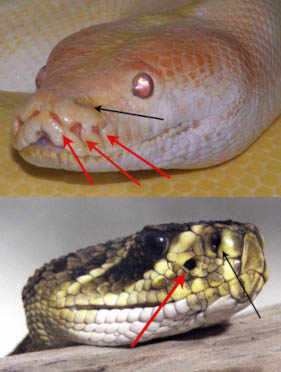Snakes, with their unique and often misunderstood characteristics, have evolved remarkable sensory adaptations that allow them to navigate their environment and thrive in diverse habitats. In this article, we will uncover the extraordinary sensory world of snakes and how they perceive the world around them.

Sight Beyond Vision
One of the most common misconceptions about snakes is their poor eyesight. While it's true that many snake species have relatively small or simple eyes, their vision is more nuanced than we might think. Snakes can see a range of colors, but their vision is best adapted to detecting movement. This adaptation helps them locate prey and avoid predators.
The Infrared Connection
Snakes have an exceptional ability to "see" heat through a specialized sensory organ called the pit organ, or "heat pit." These heat-sensing pits are located on the sides of the snake's head, and they allow snakes to detect the infrared radiation emitted by warm-blooded animals, including their prey. This adaptation is particularly crucial for ambush predators who hunt in low light conditions.
Smell and Taste
Snakes rely heavily on their sense of smell and taste to navigate their environment. They have a highly developed sense of smell, and their forked tongues play a crucial role in this process. Snakes use their tongues to collect scent particles from the air, the ground, or objects. By flicking their tongues and transferring these particles to a specialized organ in the roof of their mouth called the Jacobson's organ, snakes can "taste" the environment, detect prey, and follow scent trails.
Vibrations and Sound
Snakes are also sensitive to vibrations and sound. While they lack external ears, they can detect vibrations in the ground through their lower jaw and body. This ability helps them perceive approaching threats, potential prey, and even the presence of other snakes. Some snake species can also produce sounds, although these sounds are typically not audible to the human ear.
Understanding the World of Snakes
The remarkable senses of snakes are a testament to their ability to adapt and thrive in various environments. Each sensory adaptation serves a specific purpose, whether it's hunting, avoiding danger, or finding a mate.
End
Snakes are extraordinary creatures with sensory adaptations that allow them to perceive the world in ways that are vastly different from our own. These adaptations are the result of millions of years of evolution and have made snakes highly successful and diverse in their ecological niches. Understanding the sensory world of snakes not only deepens our appreciation of these reptiles but also contributes to their conservation and responsible coexistence with humans in the natural world.